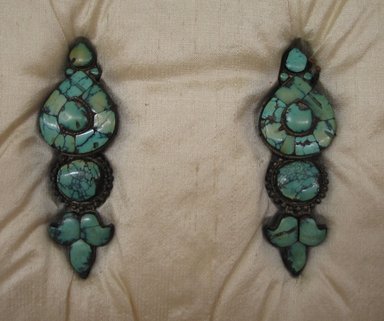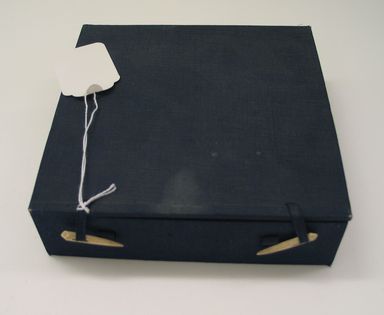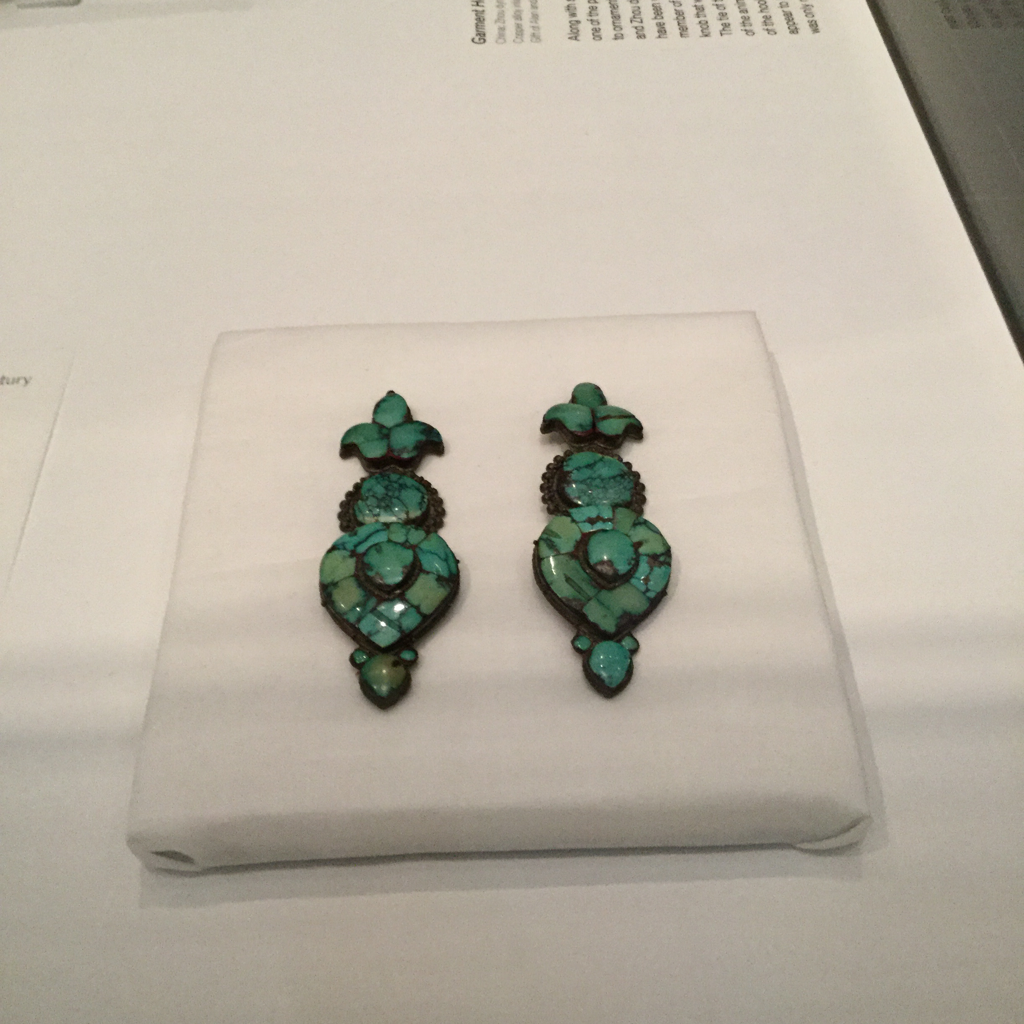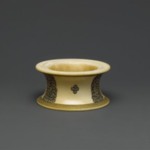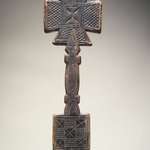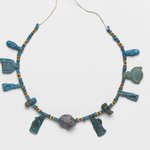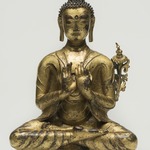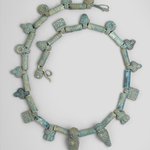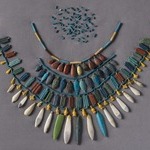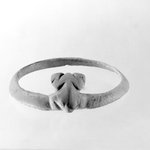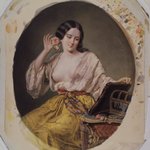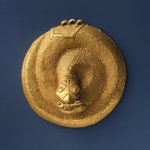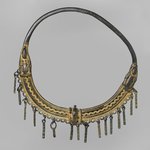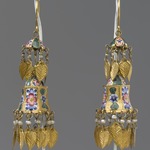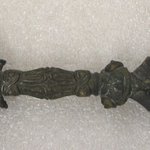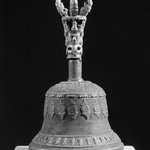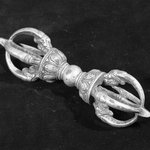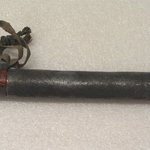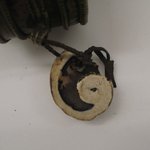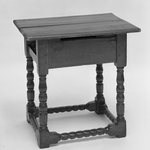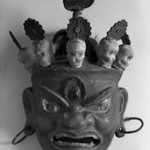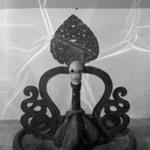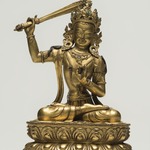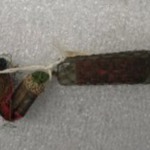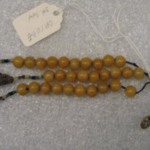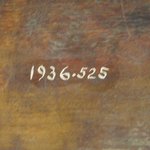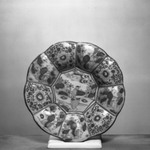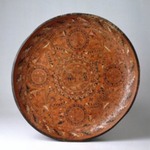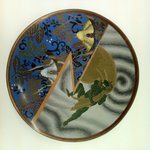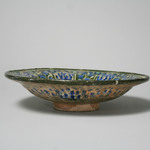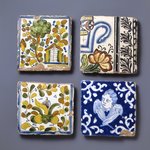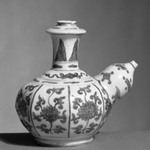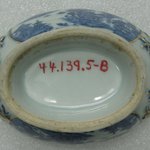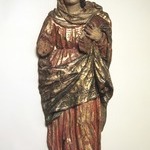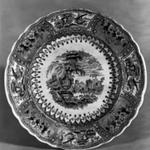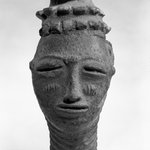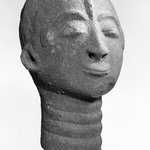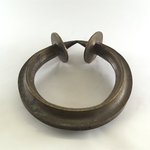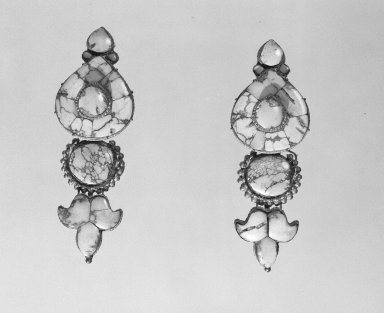

Pair of Woman’s Ear Pendants, 17th or 18th century. Silver inlaid with turquoise, 1 1/2 × 1 × 4 in. (3.8 × 2.5 × 10.2 cm). Brooklyn Museum, Gift of the Ernest Erickson Foundation, Inc., 86.227.43a-b. Creative Commons-BY (Photo: Brooklyn Museum, 86.227.43a-b_acetate_bw.jpg)
Pair of Woman’s Ear Pendants
Asian Art
These ornaments were not worn in the ear itself, but appended to a Tibetan woman’s headdress near the ears to frame the face. They served to demonstrate her personal wealth and social status. The most highly prized, sky-blue turquoise originated from mines near Nishapur in Khorosan, Iran, and was traded to Tibet via India; darker colored turquoise came from both Tibet and China. The color turquoise was important to Tibetans as a reference to the sky and lakes, while the mineral turquoise was thought to have powers that added to its appeal as a material for personal adornment. According to the Blue Beryl, an important Tibetan medical treatise written by Sangye Gyatso (1653–1705), turquoise had healing properties: an antidote for poison and a cure for diseases, including liver ailments.
MEDIUM
Silver inlaid with turquoise
DATES
17th or 18th century
DIMENSIONS
1 1/2 × 1 × 4 in. (3.8 × 2.5 × 10.2 cm)
(show scale)



COLLECTIONS
Asian Art
ACCESSION NUMBER
86.227.43a-b
CREDIT LINE
Gift of the Ernest Erickson Foundation, Inc.
EXHIBITIONS
MUSEUM LOCATION
This item is not on view
CAPTION
Pair of Woman’s Ear Pendants, 17th or 18th century. Silver inlaid with turquoise, 1 1/2 × 1 × 4 in. (3.8 × 2.5 × 10.2 cm). Brooklyn Museum, Gift of the Ernest Erickson Foundation, Inc., 86.227.43a-b. Creative Commons-BY (Photo: Brooklyn Museum, 86.227.43a-b_acetate_bw.jpg)
IMAGE
group, 86.227.43a-b_acetate_bw.jpg. Brooklyn Museum photograph, 2010
"CUR" at the beginning of an image file name means that the image was created by a curatorial staff member. These study images may be digital point-and-shoot photographs, when we don\'t yet have high-quality studio photography, or they may be scans of older negatives, slides, or photographic prints, providing historical documentation of the object.
RIGHTS STATEMENT
Creative Commons-BY
You may download and use Brooklyn Museum images of this three-dimensional work in accordance with a Creative Commons license. Fair use, as understood under the United States Copyright Act, may also apply.
Please include caption information from this page and credit the Brooklyn Museum. If you need a high resolution file, please fill out our online application form (charges apply).
For further information about copyright, we recommend resources at the United States Library of Congress, Cornell University, Copyright and Cultural Institutions: Guidelines for U.S. Libraries, Archives, and Museums, and Copyright Watch.
For more information about the Museum's rights project, including how rights types are assigned, please see our blog posts on copyright.
If you have any information regarding this work and rights to it, please contact copyright@brooklynmuseum.org.
RECORD COMPLETENESS
Not every record you will find here is complete. More information is available for some works than for others, and some entries have been updated more recently. Records are frequently reviewed and revised, and we welcome any additional information you might have.
